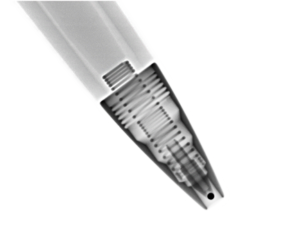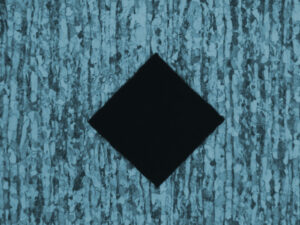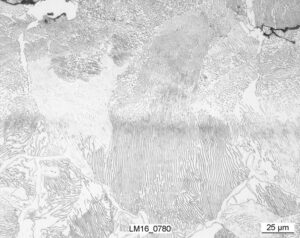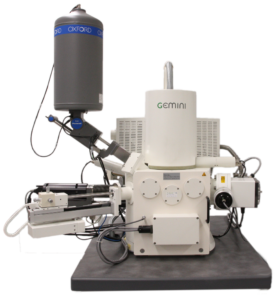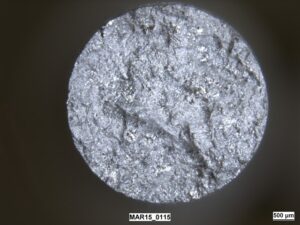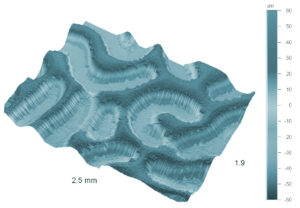Metallography
Metallography or structural science examines the microstructure of metals to assess their microstructure.
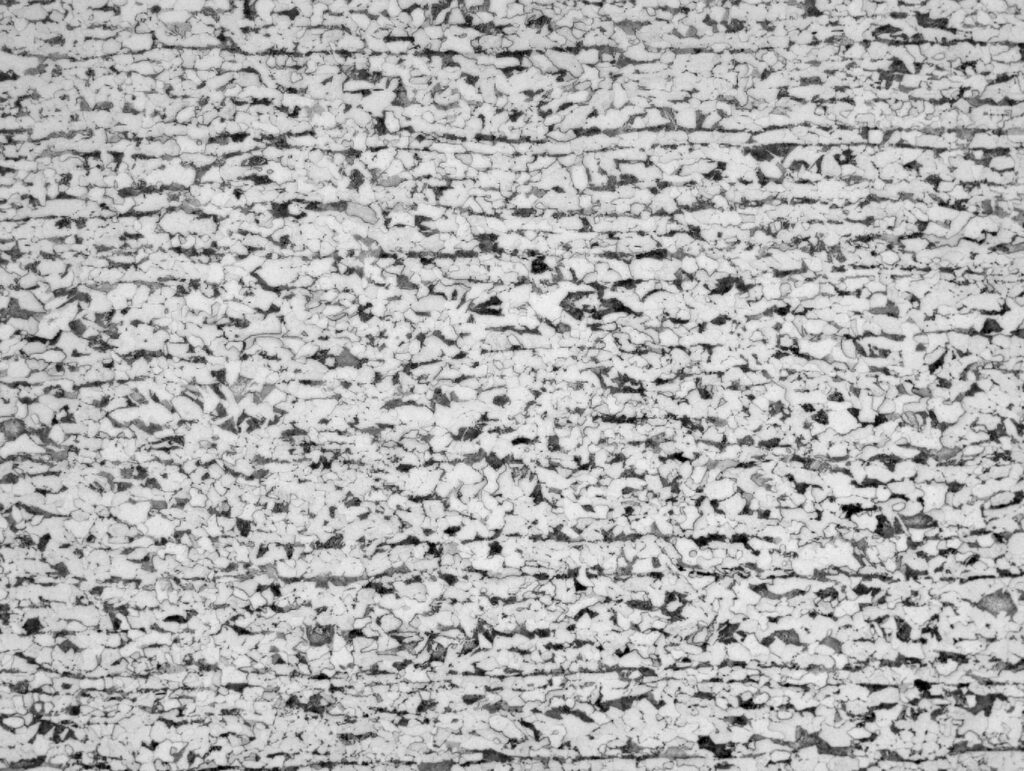
What is METALLOGRAPHY
Metallography, also known as metallurgy, is an essential science in metallurgy that deals with the detailed examination and analysis of the microstructure of metallic materials. This specialized discipline plays a central role in quality assurance in the production and processing of metals. By using microscopic techniques, metallography enables the assessment of metallic structures, both in qualitative and quantitative terms.
Our experts, trained metallographers, have a deep understanding of materials science (corrosion behavior, physical and mechanical properties, materials testing, etc.) as well as the properties and processing of metals and have the necessary experience to accurately prepare and analyze metallic samples. This experience is essential to avoid misjudgements in microstructural assessment and thus ensure the highest quality standards. We understand the importance of metallography not only as a quality control tool, but also as a way of ensuring that our customers’ products both comply with legal requirements and are of convincing quality.

Core objectives of metallography
- Analysis of the microstructure: Metallography provides insights into the internal structure and “history” of metals. This includes the identification of various intermetallic phases, grain structures and inclusions, which are crucial for understanding metal composition and properties.
- Grain size determination: A key characteristic that influences the mechanical properties of a metal, such as ductility, is the grain size. This information is particularly important for designers in order to optimize material selection and use.
- Phase composition: Many of you may remember the iron-carbon diagram from your training. Knowledge of the phase composition of a metal is essential for numerous applications.
- Evaluation of inclusions: Another important aspect of metallography is the detection and assessment of inclusions or impurities. These can significantly impair the quality and functionality of a material.
Particle size determination ISO/IEC 17025 accredited and according to standard
Our experienced metallographers regularly carry out accredited size determinations in accordance with DIN EN ISO 643 or ASTM E 112 - 13 and are able to support the customer in interpreting the results.
Macroscopic examinations
Our analyses often begin with a macroscopic examination. We look at and analyze external and larger structural properties that are visible to the naked eye or under low magnification (approx. 50x). This is used to identify surface defects, cracks, corrosion, as well as to assess the uniformity and quality of weld seams or other joints, for example. This provides an initial overview of possible material defects or processing deficiencies.
- Fractographic analyses, i.e. fracture analysis / crack analysis (forced fracture, fatigue fracture, brittle fracture, hydrogen embrittlement)
- Weld seam inspection by grinding
- …
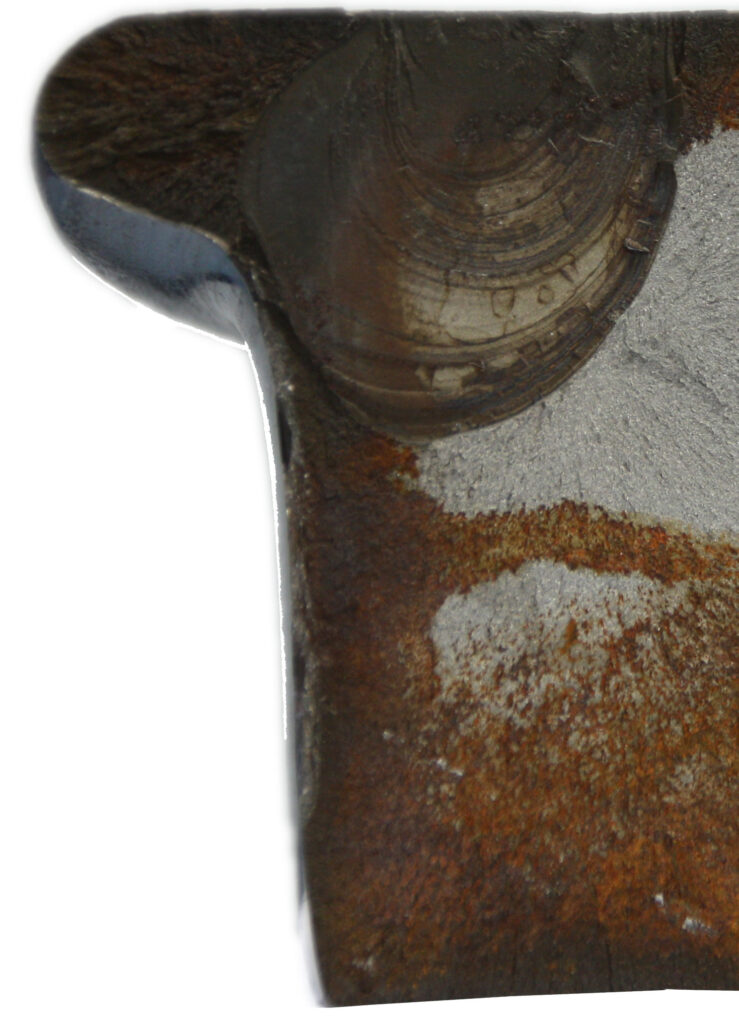
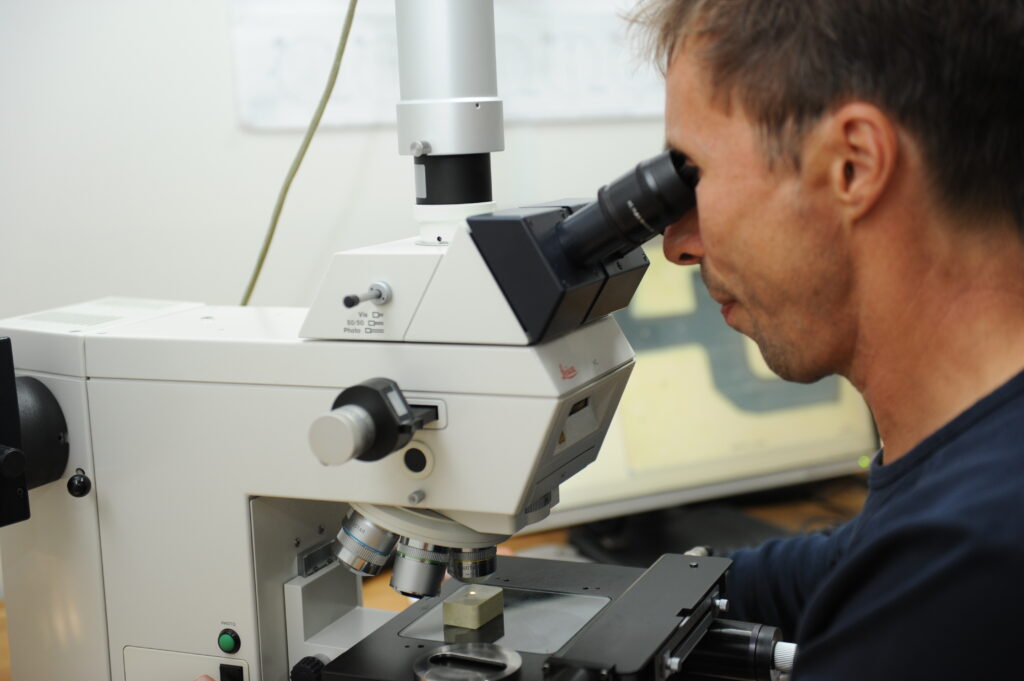
mIcroscopic examinations
Our analyses often include a microscopic examination. Here we focus on the detailed examination of microstructures that are only visible under high magnification using microscopes. This reveals inclusions, crystals, grains, grain boundaries (e.g. ferrite, pearlite). This examination enables us to precisely analyze the internal properties of the materials, such as grain sizes, phase distribution and microcracks. This allows us to gain deeper insights into the material properties and their influence on overall performance, such as strength and durability. This detailed analysis is crucial for understanding and solving complex material problems.
- Microstructure analysis in microsection
- Heat treatment condition
- Grain size determination
- Porosity determination
- Primary silicon crystal evaluation
- Rand decarburization
Possible tests
possible tests are listed as examples:
- Microphotographic determination of the recognizable grain size of steel according to DIN EN ISO 643 or ASTM E112 – 13
- Microstructure of cast iron
- Electron and laser beam welding joints
- Fusion-welded joints on steel, nickel, titanium and their alloys
- Arc welded joints on aluminum and its alloys – Assessment groups of irregularities
- Standard specifications of nickel-cobalt steels
Unsure whether metallography can solve your problem?
Methods to support metallography
Our focus in metallography
Understanding material properties, interpreting failure behavior and recognizing correlations is crucial for the quality of a complex metallographic analysis. Our metallographers and material scientists have many years of experience in the metal industry to achieve this. On the one hand, through being part of the former research center of an aluminum manufacturer, but also through numerous industrial customers from the MEM industry.
FractograPHic analysis of fracture surfaces
Fractographic analysis of fracture surfaces is an essential area of metallography that focuses on the investigation of fracture mechanisms and patterns in metallic materials. Our experienced experts can identify causes of material failure such as fatigue fractures, overload fractures or corrosion-induced fractures. Fractographic investigations provide in-depth insights into the fracture morphology, allowing conclusions to be drawn about the stress history and any material defects. These analyses are crucial for improving material quality and preventing future failures in critical applications.
Begutachtung der Morphologie technischer Oberflächen
Lorem ipsum dolor sit amet, consetetur sadipscing elitr, sed diam nonumy eirmod tempor invidunt ut labore et dolore magna aliquyam erat, sed diam voluptua. At vero eos et accusam et justo duo dolores et ea rebum. Stet clita kasd gubergren, no sea takimata sanctus est Lorem ipsum dolor sit amet. Lorem ipsum dolor sit amet, consetetur sadipscing elitr, sed diam nonumy eirmod tempor invidunt ut labore et dolore magna aliquyam erat, sed diam voluptua. At vero eos et accusam et justo duo dolores et ea rebum. Stet clita kasd gubergren, no sea takimata sanctus est Lorem ipsum dolor sit amet.
Gefüge-Beurteilung
Lorem ipsum dolor sit amet, consetetur sadipscing elitr, sed diam nonumy eirmod tempor invidunt ut labore et dolore magna aliquyam erat, sed diam voluptua. At vero eos et accusam et justo duo dolores et ea rebum. Stet clita kasd gubergren, no sea takimata sanctus est Lorem ipsum dolor sit amet. Lorem ipsum dolor sit amet, consetetur sadipscing elitr, sed diam nonumy eirmod tempor invidunt ut labore et dolore magna aliquyam erat, sed diam voluptua. At vero eos et accusam et justo duo dolores et ea rebum. Stet clita kasd gubergren, no sea takimata sanctus est Lorem ipsum dolor sit amet.
Ablauf einer Metallographischen Untersuchung
makroskopisch
Lorem ipsum dolor sit amet, consetetur sadipscing elitr, sed diam nonumy eirmod tempor invidunt ut labore et dolore magna aliquyam erat, sed diam voluptua. At vero eos et accusam et justo duo dolores et ea rebum. Stet clita kasd gubergren, no sea takimata sanctus est Lorem ipsum dolor sit amet. Lorem ipsum dolor sit amet, consetetur sadipscing elitr, sed diam nonumy eirmod tempor invidunt ut labore et dolore magna aliquyam erat, sed diam voluptua. At vero eos et accusam et justo duo dolores et ea rebum. Stet clita kasd gubergren, no sea takimata sanctus est Lorem ipsum dolor sit amet.
mikroskopisch
Vor einer mikroskopischen Untersuchung müssen die Proben in aller Regel präpariert werden. Dazu gehören vor allem folgende Schritte
Probenvorbereitung
Lorem ipsum dolor sit amet, consetetur sadipscing elitr, sed diam nonumy eirmod tempor invidunt ut labore et dolore magna aliquyam erat, sed diam voluptua. At vero eos et accusam et justo duo dolores et ea rebum. Stet clita kasd gubergren, no sea takimata sanctus est Lorem ipsum dolor sit amet. Lorem ipsum dolor sit amet, consetetur sadipscing elitr, sed diam nonumy eirmod tempor invidunt ut labore et dolore magna aliquyam erat, sed diam voluptua. At vero eos et accusam et justo duo dolores et ea rebum. Stet clita kasd gubergren, no sea takimata sanctus est Lorem ipsum dolor sit amet.
Einbetten
Lorem ipsum dolor sit amet, consetetur sadipscing elitr, sed diam nonumy eirmod tempor invidunt ut labore et dolore magna aliquyam erat, sed diam voluptua. At vero eos et accusam et justo duo dolores et ea rebum. Stet clita kasd gubergren, no sea takimata sanctus est Lorem ipsum dolor sit amet. Lorem ipsum dolor sit amet, consetetur sadipscing elitr, sed diam nonumy eirmod tempor invidunt ut labore et dolore magna aliquyam erat, sed diam voluptua. At vero eos et accusam et justo duo dolores et ea rebum. Stet clita kasd gubergren, no sea takimata sanctus est Lorem ipsum dolor sit amet.
Schleifen
Lorem ipsum dolor sit amet, consetetur sadipscing elitr, sed diam nonumy eirmod tempor invidunt ut labore et dolore magna aliquyam erat, sed diam voluptua. At vero eos et accusam et justo duo dolores et ea rebum. Stet clita kasd gubergren, no sea takimata sanctus est Lorem ipsum dolor sit amet. Lorem ipsum dolor sit amet, consetetur sadipscing elitr, sed diam nonumy eirmod tempor invidunt ut labore et dolore magna aliquyam erat, sed diam voluptua. At vero eos et accusam et justo duo dolores et ea rebum. Stet clita kasd gubergren, no sea takimata sanctus est Lorem ipsum dolor sit amet.
Polieren
Lorem ipsum dolor sit amet, consetetur sadipscing elitr, sed diam nonumy eirmod tempor invidunt ut labore et dolore magna aliquyam erat, sed diam voluptua. At vero eos et accusam et justo duo dolores et ea rebum. Stet clita kasd gubergren, no sea takimata sanctus est Lorem ipsum dolor sit amet. Lorem ipsum dolor sit amet, consetetur sadipscing elitr, sed diam nonumy eirmod tempor invidunt ut labore et dolore magna aliquyam erat, sed diam voluptua. At vero eos et accusam et justo duo dolores et ea rebum. Stet clita kasd gubergren, no sea takimata sanctus est Lorem ipsum dolor sit amet.
Ätzen
Lorem ipsum dolor sit amet, consetetur sadipscing elitr, sed diam nonumy eirmod tempor invidunt ut labore et dolore magna aliquyam erat, sed diam voluptua. At vero eos et accusam et justo duo dolores et ea rebum. Stet clita kasd gubergren, no sea takimata sanctus est Lorem ipsum dolor sit amet. Lorem ipsum dolor sit amet, consetetur sadipscing elitr, sed diam nonumy eirmod tempor invidunt ut labore et dolore magna aliquyam erat, sed diam voluptua. At vero eos et accusam et justo duo dolores et ea rebum. Stet clita kasd gubergren, no sea takimata sanctus est Lorem ipsum dolor sit amet.
Wofür nutzt Metallografie?
Allgemeine Metallographische Analysen
Untersuchung des inneren Aufbaus, Korngrößen, Phasenanteile, Einschlussbewertung.Spezifische Untersuchungsmethoden
Gefügeuntersuchung, Wärmebehandlungszustand, Korngrößen- und Porositätsbestimmung, Randentkohlung.Oberflächen- und Schweißnahtanalysen
Morphologie, Härteprüfungen, Feststellung von Oberflächenveränderungen, fraktografische Analysen, Bruch- und Rissuntersuchungen.Normen und spezielle Prüfverfahren
Diverse standardisierte Verfahren für Metallanalysen und Schweißnahtprüfungen, einschließlich spezifischer Normen wie VW 50093 und 6093, DIN EN ISO 643, 945-1, 13919 – Teil 1, 5817, 10042, ASTM F15 – 04, E112 – 13, 14104, 5832 – Teil 3
Für folgende Werkstoffe besteht bei Suisse TP langjähriges Material-Know-how:
- Stähle: Baustähle, Baustähle zur Wärmebehandlung bestimmt, Vergütungsstähle, Werkzeugstähle, chemisch beständige Stähle, warmfeste Stähle, Funktionswerkstoffe, Gusswerkstoffe
Aluminium: Gusslegierungen, Knetlegierungen, aushärtbar und nicht aushärtbar - Kupfer und Kupferlegierungen (Messing, Bronze)
- Nickel und Nickellegierungen (Gusslegierungen, Knetlegierung; aushärtbar, nicht aushärtbar)
- Titan und Titanlegierungen
- Keramik (Oxidkeramik, Silikatkeramik)
- Polymere: Plastomere (Thermoplaste), Duromere, Elastomere, Verbundmaterialien
Lichtmikroskopische Darstellung eines Gefüges.
| Gerätetyp und Ausrüstung | Makroskop, Lichtmikroskop (Leica, Reichert), Auf- und Durchlicht, Hellfeld, Dunkelfeld, polarisiertes Licht, Differentialinterferenzkontrast) |
| Vergrösserung | 5 – 500 fach ( 1000 fach ) |
| Typische Anwendungen | Gefügebeurteilung, Korngrösse, Schichtdicken, Ausscheidungszustand |
Metallografische Schliffuntersuchungen, Gefügeuntersuchungen, Gefügezustände, Ätzungen zur Gefügekontrastierung, spezielle Ätzungen (auf Anfrage), Schichtdickenmessung im Schliff, Zielpräparationen, Ambulante Metallographie, physikalische Analysemethoden |
Schadensanalytik und Bauteiloptimierung
INTERPRETATION UND BERATUNG
- Allgemein: Analyse des inneren Aufbaus: Die Metallographie erlaubt die Untersuchung des inneren Aufbaues und der „Lebensgeschichte“ von Metallen. Dazu gehört z.B. die Identifizierung von Phasen, Körnern oder Einschlüssen.
- Bestimmung von Korngrößen: Die Korngröße beeinflusst die mechanischen Eigenschaften eines Materials erheblich, z.B. die Streckgrenze – entsprechend wichtige ist diese information z.B. für Konstrukteure.
- Ermittlung von Phasenanteilen: Leser/innen erinnern sich aus Ausbildung oder Studium evtl. noch an das Eisen-Kohlenstoff-Diagramm (die einen mit Freude, andere vielleicht mit Schrecken). Doch für viele Anwendungen ist es kritisch, die Zusammensetzung der Phasen in einem Metall zu kennen.
- Einschlussbewertung: Ermöglicht die Identifizierung und Schätzung von Einschlüssen oder Verunreinigungen, welche die Qualität und Leistung eines Werkstoffs beeinträchtigen können.
- Gefügeuntersuchung im Mikroschliff
- Wärmebehandlungszustand
- Korngrößenbestimmung
- Porositätsbestimmung nach VW 50093, VW 6093
- Primär Silizium-Kristall-Auswertung
- Randentkohlung
- Überprüfung der Schweißnahtgeometrie
- Gefügeuntersuchung
- Härteprüfung an den Wärmeeinflusszonen
- Begutachtung der Morphologie technischer Oberflächen
- Feststellung von Veränderungen der Oberflächen durch äußere Einwirkung wie Korrosion und Verschleiß
- Durchführung fraktografischer Analysen von Bruchflächen
- Morphologische und chemische Partikelanalyse
- Bruchanalyse / Rissuntersuchung (Gewaltbruch, Dauerbruch, Sprödbruch, Wasserstoffversprödung)
- Löhtnahtprüfung bzw. Schweißnahtprüfung im Schliff
- EDX-Analyse mit REM-Untersuchung
- REM Linescan und Mapping
- Mikrophotographische Bestimmung der erkennbaren Korngröße von Stahl nach DIN EN ISO 643
- Mikrostruktur von Gusseisen nach DIN EN ISO 945-1
- Elektronen- und Laserstrahl-Schweißverbindungen nach DIN EN ISO 13919 – Teil 1: Stahl, Nickel, Titan und deren Legierungen
- Schmelzschweißverbindungen an Stahl, Nickel, Titan und deren Legierungen nach DIN EN ISO 5817
- Lichtbogenschweißverbindungen an Aluminium und seinen Legierungen – Bewertungsgruppen von Unregelmäßigkeiten nach DIN EN ISO 10042
- Standard Spezifikationen von Nickel-Kobald-Stählen nach ASTM F15 – 04
- Bestimmung der Korngröße nach ASTM E112 – 13
- Zahnräder nach ISO 14104 – Schleifbrandprüfung – chemische Methode
- Chirurgische Implantate nach DIN EN ISO 5832 – Metallische Werkstoffe – Teil 3: Titan 6-Aluminium 4-Vanadium Knetlegierung“
- Beurteilung von Makro- und Mikrogefüge, Bestimmung der Gefügemengenanteile
- Schliffpräparation von dünnen Schichten und kleinsten Bauteilen
- Auf- und Durchlichtmikroskopie
- Fabrikationskontrollen
- Prüfung von Schweissverbindungen
- Beurteilung von Wärmebehandlungen
- Durchführung von Spezialätzungen
- Alle gängigen Härteprüfungen, Härteprofile, Mikrohärte
- Ambulante Metallografie mit diversen Gefügeabdruckstechniken (sog. Replika)
- Beratung bei Fragen der Werkstoffoptimierung
- Charakterisierung von Werkstoffen und Beschichtungen
- Restlebensdaueranalyse an Hochtemperaturwerkstoffen

